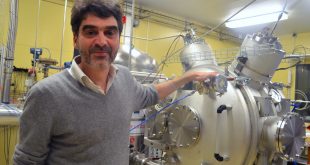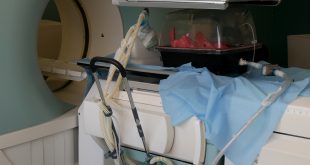The lithium-ion battery is one of the best-sellers of recent decades in microelectronics. It is present in most of the devices we use in our daily lives, from our mobile phones to electric cars. The 2019 Nobel Prize in Chemistry was awarded to John Goodenough, Stanley Wittingham, and Akira Yoshino, in recognition of their initial research that led to its …
Read More »Search Results for:
When engineering helps improve healthcare
Editorial. Tomorrow’s medicine will be at least 4P: personalized, preventive, predictive, participative. ‘At least,’ because some would readily add “precise,” “proof” (evidence-based), “pathway-based” etc. Beyond naming this type of medicine and determining the correct number of Ps, medicine is clearly undergoing a profound change. A transformation supported in part by engineering, which is bringing major innovations to the healthcare …
Read More »Is dark matter the key to the medical scanner of the future?
A team of researchers at IMT Atlantique is developing a new type of medical scanner called XEMIS. To create the device, the team drew on their previous research in fundamental physics and the detection of dark matter, using liquid xenon technology. The first time the device was tested was using small animals. It allowed the scientists to significantly lower the …
Read More »Aerosol therapy: An ex vivo model of lungs
A researcher in Health Engineering at Mines Saint-Étienne, Jérémie Pourchez, and his colleagues at the Saint-Étienne University Hospital, have developed an ex vivo model of lungs to help improve medical aerosol therapy devices. An advantage of this technology is that scientists can study inhalation therapy whilst limiting the amount of animal testing that they use. This article is part …
Read More »Bone implants to stimulate bone regeneration
Mines Saint-Étienne’s Centre for Biomedical and Healthcare Engineering (CIS) seeks to improve healthcare through innovations in engineering. David Marchat, a materials researcher at CIS, is working on developing calcium phosphate-based biomaterials. Due to their ability to interact with living organisms, these bone implants can help regenerate bones. This article is part of our dossier “When engineering helps improve healthcare“ …
Read More »An “electronic nose” analyzes people’s breath to help sniff out diseases
In partnership with IMT Atlantique, a team of researchers at IMT Lille Douai have developed a device which can measure the level of ammonia in someone’s breath. The aim of the artificial nose is to use this device to create a personalized follow-up care for patients affected by chronic kidney disease. Eventually, the machine could even allow doctors to detect …
Read More »Mendeleev: The history of a table
2019 marks the 150th anniversary of the periodic table of elements. To celebrate this anniversary, the Mines ParisTech Library and Mineralogy Museum have teamed up to create the exhibition Before Mendeleev: Genesis of a Table, on view until 31 January 2020. The exhibition traces the contributions of the scientists who preceded Mendeleev and led him to present the periodic table …
Read More »Do mobile apps for kids respect privacy rights?
The number of mobile applications for children is rapidly increasing. An entire market segment is taking shape to reach this target audience. Just like adults, the personal data issue applies to these younger audiences. Grazia Cecere, a researcher in the economics of privacy at Institut Mines-Télécom Business School, has studied the risk of infringing on children’s privacy rights. In this …
Read More »Robots on their best behavior in the factory of the future
A shorter version of this article was published in the monthly magazine Acteurs du franco-allemand, as part of an editorial partnership. Robots must learn to communicate better if they want to earn their spot in the factory of the future. This will be a necessary step in ensuring the autonomy and flexibility of production systems. This issue is the focus …
Read More »Optics as a key to understanding rogue waves
Rogue waves are powerful waves that erupt suddenly. They are rare, but destructive. Above all, they are unpredictable. Surprisingly, researchers have been able to better understand these fascinating waves by studying similar phenomena in fiber optic lasers. Before scientists began measuring and observing them, rogue waves had long been perceived as legends. They can reach a height of 30 …
Read More » I'MTech L'actualité scientifique et technologique de l'IMT
I'MTech L'actualité scientifique et technologique de l'IMT









